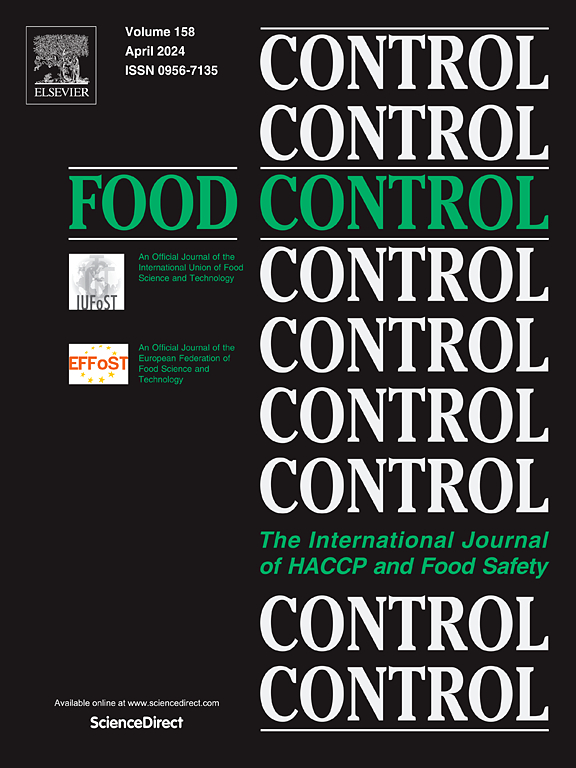Effects of different modes of high-voltage alternating electric field action on the freshness and metabolites of Litopenaeus vannamei during partial freezing storage
IF 5.6
1区 农林科学
Q1 FOOD SCIENCE & TECHNOLOGY
引用次数: 0
Abstract
High-voltage alternating electric field (HAEF) is a non-thermal food processing technique that could be used to extend the shelf lives of aquatic products. The present study aimed to investigate the effects of different HAEF (3 kV) output time actions on the freshness and metabolites of shrimp (Litopenaeus vannamei) stored at partial freezing (PF) (−3 °C), including single-used HAEF (SHAEF), interval-used HAEF (IHAEF) and continuous-used HAEF (CHAEF). Results showed that compared with the control group, the IHAEF and CHAEF-treated shrimps had slower development of melanosis, lower ployhenoloxidase (PPO) activities, pH and thiobarbituric acid-reactive substances, but showed higher weight loss throughout the storage period. Compared with the control group at day 10 of storage, the total viable counts (TVC) of IHAEF and CHAEF groups were reduced by 1.17 and 1.21 lg CFU/g, respectively. The SHAEF treatment presented a relatively limited efficiency on extending the shelf life of shrimp, with no significant difference in PPO activity than the CHAEF group only during the first 8 days of storage. Additionally, the results of untargeted metabolomics analysis showed that the action of HAEF greatly affected the quantity of metabolites. The differential metabolic pathways of the three HAEF treatments were mainly related to lipid metabolism, including sphingolipid metabolism and lipid oxidation. This study demonstrated that the IHAEF and CHAEF treatments showed more significant efficiency in extending the shelf life of shrimp through minifying the adverse effects of melanosis, lipid oxidation, and microbial growth during PF storage.
求助全文
约1分钟内获得全文
求助全文
来源期刊

Food Control
工程技术-食品科技
CiteScore
12.20
自引率
6.70%
发文量
758
审稿时长
33 days
期刊介绍:
Food Control is an international journal that provides essential information for those involved in food safety and process control.
Food Control covers the below areas that relate to food process control or to food safety of human foods:
• Microbial food safety and antimicrobial systems
• Mycotoxins
• Hazard analysis, HACCP and food safety objectives
• Risk assessment, including microbial and chemical hazards
• Quality assurance
• Good manufacturing practices
• Food process systems design and control
• Food Packaging technology and materials in contact with foods
• Rapid methods of analysis and detection, including sensor technology
• Codes of practice, legislation and international harmonization
• Consumer issues
• Education, training and research needs.
The scope of Food Control is comprehensive and includes original research papers, authoritative reviews, short communications, comment articles that report on new developments in food control, and position papers.
 求助内容:
求助内容: 应助结果提醒方式:
应助结果提醒方式:


